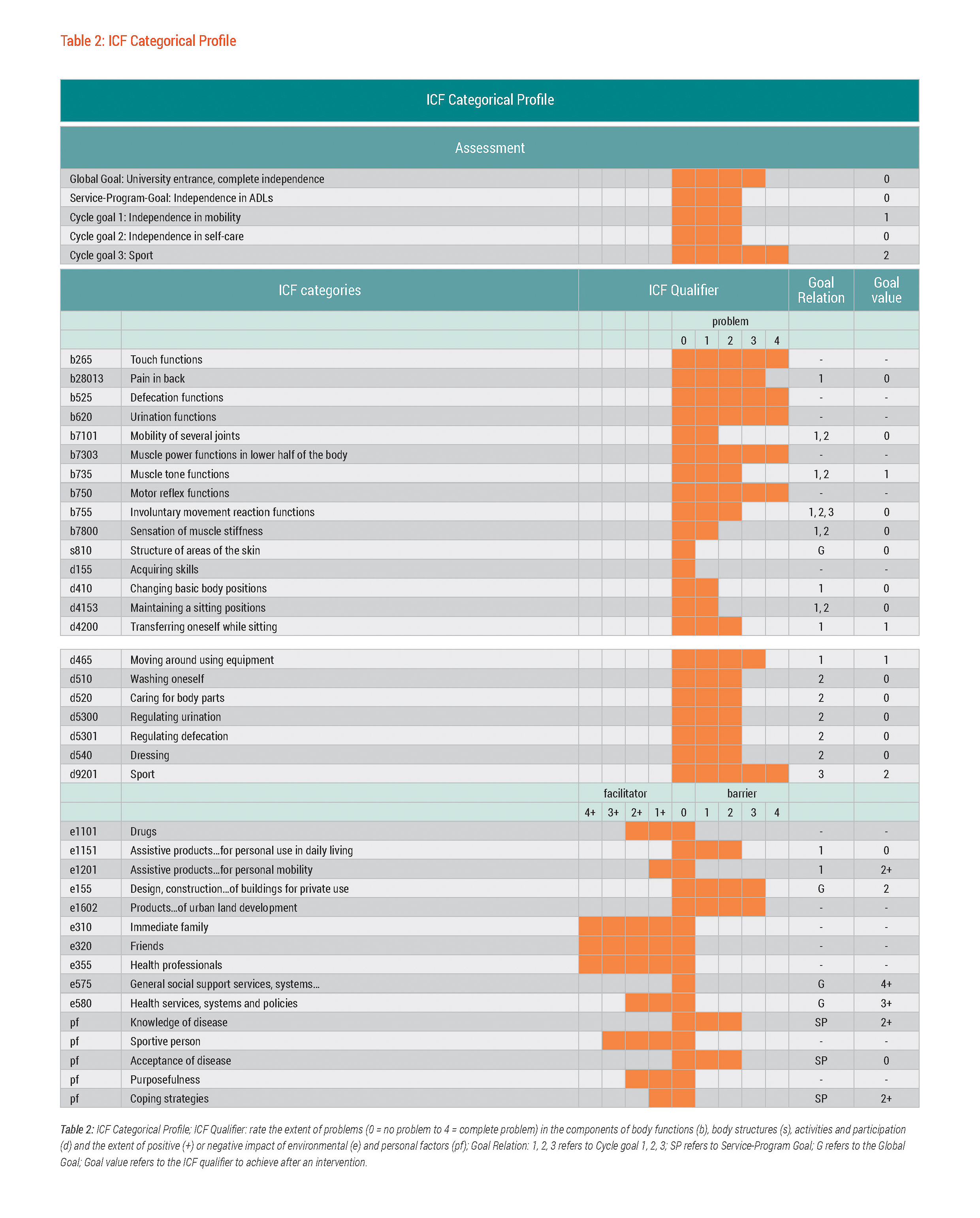Evaluation
In Michael's case, most of the interventions met their targets within the expected timeframe. In terms of body functions and structure, Michael’s muscle stiffness had decreased, and the structure of areas of his skin continued to pose no problem. He also made rapid progress in his activities; he was better able to maintain a sitting position and transfer himself, wash, dress and regulate his urination and defecation.
Michael was also able to begin exploring options for sports open to him, and started making some progress playing basketball. Psychologically, his acceptance and knowledge of his disease improved. About Michael's overall attitude and progress, his psychologist noted:
Michael is a very special young man who has quite a sophisticated attitude toward his actual life situation. This is not common in persons of his age and it enables him to handle this difficult situation in a realistic and determined way. He knows what he wants and is always testing his physical limits to improve his functioning. At the moment he is retreating a little from his social environment. This is typical behaviour just before discharge when a patient realizes all the challenges he will soon confront in the home environment. But Michael has a very good prognosis for becoming an independent, integrated and self-determined individual with a positive life satisfaction.
Table 4: ICF Evaluation Display; ICF Qualifier: rate the extent of problems (0 = no problem to 4 = complete problem) in the components of body functions (b), body structures (s), activities and participation (d) and the extent of positive (+) or negative impact of environmental (e) and personal factors (pf); Goal Relation: 1, 2, 3 refers to Cycle goal 1, 2, 3; SP refers to Service-Program goal; G refers to Global goal; Goal value refers to the ICF qualifier to achieve after an intervention; Goal achievement: + means achieved, - means not achieved.
However a few intervention targets were not achieved (despite some progress in these targets). These included back pain, joint mobility, moving around in the wheelchair and caring for his body.
The following explanations offer some insight:
- Back pain: Despite continuation of back pain the degree of pain improved with the amount of training and acclimitization to the wheelchair.
- Joint mobility: The target for knee joint extension was not met; however, no additional functional problems resulted, and work on joint mobility continued.
- Moving around with the wheelchair: Steps proved particularly difficult for Michael. Though there was some improvement, more intensive practice was needed. Michael benefited from his lack of fear in maneuvering the wheelchair – a personal resource not noted in the initial assessment.
- Caring for body: Michael was able to perform this, but didn't feel confident enough in his abilities and still wanted his nurses to check him.
The fact that these intervention targets were not met was not considered by the rehabilitation team as a threat to meeting the cycle goals. Given Michael's overall achievements, the rehabilitation team fully expected improvements in these targets in the subsequent rehabilitation phase, not least because of the strong resources Michael brought into the rehabilitation process.
